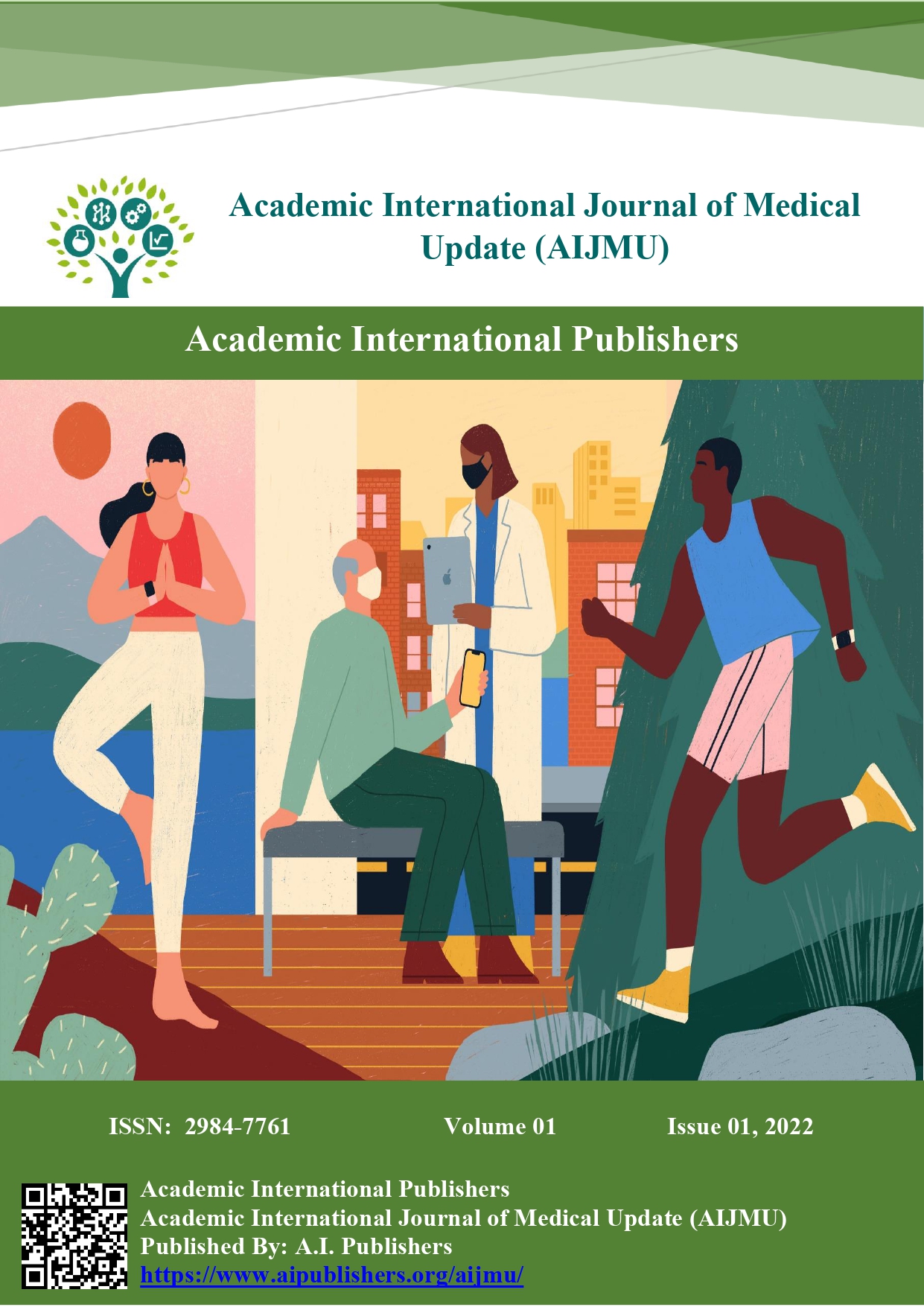An Association Between Diabetes Mellitus With Blood Groups, Leukocytes and Serum Bilirubin
DOI:
https://doi.org/10.59675/U213Keywords:
Diabetes Mellitus,, Blood Groups,, Leukocytes,, Serum Bilirubin.Abstract
Blood groups play an essential role in the incidence of diabetes mellitus type two and are considered predisposing factors. The Center of diabetes mellitus / Marjan Hospital recorded 117 cases of diabetes and followed for other identifications. Blood analysis was done in the Hematology laboratory in Al – Mustaqble University. Blood group A+ was associated with a high incidence of type 2 diabetes (52%), while blood group O+ and O- were the lowest percent (2.5 %) for both of them. Blood groups AB+ and B+ were distributed in diabetic patients (10%) for each. The percentage of Rh+ factor in diabetic patients was 87%, Whereas the Rh- was 13%. Serum bilirubin is inversely associated with insulin resistance in adult people. Bilirubin was increased at the beginning of diabetes but decreased with duration. White blood cells decreased in number in comparison with the control group, and the percentage of lymphocytes in diabetic patients also decreased. These results prove a significant relationship between blood groups and diabetes mellitus.
Downloads
References
McCarthy MI. Genomics, type 2 diabetes, and obesity. New England Journal of Medicine. 2010 Dec 9;363(24):2339-50. DOI: https://doi.org/10.1056/NEJMra0906948
Simon JR, Kincaid H. The Routledge companion to philosophy of medicine.
Jl E. Are oxidative stress-activated signaling pathways mediators of insulin resistance and beta-cell dysfunction? Diabetes. 2003; 52:1-8. DOI: https://doi.org/10.2337/diabetes.52.1.1
Houstis N, Rosen ED, Lander ES. Reactive oxygen species have a causal role in multiple forms of insulin resistance. Nature. 2006 Apr 13;440(7086):944-8. DOI: https://doi.org/10.1038/nature04634
Barrett KE. Ganong's review of medical physiology.: McGraw Hill Education; 2019 Dec 29.
Donath MY, Shoelson SE. Type 2 diabetes as an inflammatory disease. Nature reviews immunology. 2011 Feb;11(2):98-107. DOI: https://doi.org/10.1038/nri2925
Bonnet F, Ducluzeau PH, Gastaldelli A, Laville M, Anderwald CH, Konrad T, Mari A, Balkau B, RISC Study Group. Liver enzymes are associated with hepatic insulin resistance, insulin secretion, and glucagon concentration in healthy men and women. Diabetes. 2011 Jun 1;60(6):1660-7. DOI: https://doi.org/10.2337/db10-1806
Williams R, Mackness J. Surfacing, sharing and valuing tacit knowledge in open learning. Evaluierung Offener Lernszenarien. E-Learning-Tag 2014 der FH JOANNEUM (Evaluation of Open Learning Scenarios. E-Learning Day 2014 at FH JOANNEUM). 2014.
Sharma S, Alfatah, Bari VK, Rawal Y, Paul S, Ganesan K. Sphingolipid biosynthetic pathway genes FEN1 and SUR4 modulate amphotericin B resistance. Antimicrobial agents and chemotherapy. 2014 Apr;58(4):2409-14. DOI: https://doi.org/10.1128/AAC.02130-13
Simon JR, Kincaid H. The Routledge companion to philosophy of medicine.
Necmiye Y. A New Movement in the Philosophical Tradition: Experimental Philosophy. Archives of Philosophy. 2023(59):43-55.
Moinzadeh F, Najafabady GM, Toghiani A. Type 2 diabetes mellitus and ABO/Rh blood groups. Journal of research in medical sciences: the official journal of Isfahan University of Medical Sciences. 2014 Apr;19(4):382.
Boland BS, Dong MH, Bettencourt R, Barrett-Connor E, Loomba R. Association of serum bilirubin with aging and mortality. Journal of clinical and experimental hepatology. 2014 Mar 1;4(1):1-7. DOI: https://doi.org/10.1016/j.jceh.2014.01.003
Jung CH, Lee MJ, Kang YM, Hwang JY, Jang JE, Leem J, Park JY, Kim HK, Lee WJ. Higher serum bilirubin level as a protective factor for the development of diabetes in healthy Korean men: a 4-year retrospective longitudinal study. Metabolism. 2014 Jan 1;63(1):87-93. DOI: https://doi.org/10.1016/j.metabol.2013.09.011
Lin LianYu LL, Kuo HsuKo KH, Hwang JueyJen HJ, Lai LingPing LL, Chiang FuTien CF, Tseng ChuenDen TC, Lin JiunnLee LJ. Serum bilirubin is inversely associated with insulin resistance and metabolic syndrome among children and adolescents.
Han SS, Na KY, Chae DW, Kim YS, Kim S, Chin HJ. High serum bilirubin is associated with the reduced risk of diabetes mellitus and diabetic nephropathy. The Tohoku journal of experimental medicine. 2010;221(2):133-40. DOI: https://doi.org/10.1620/tjem.221.133
Guzek M, Jakubowski Z, Bandosz P, Wyrzykowski B, Smoczynski M, Jabloiska A, Zdrojewski T. Inverse association of serum bilirubin with metabolic syndrome and insulin resistance in Polish population. Przegl Epidemiol. 2012 Jan 1;66(3):495-501.
Abbasi A, Deetman PE, Corpeleijn E, Gansevoort RT, Gans RO, Hillege HL, van der Harst P, Stolk RP, Navis G, Alizadeh BZ, Bakker SJ. Bilirubin as a potential causal factor in type 2 diabetes risk: a Mendelian randomization study. Diabetes. 2015 Apr 1;64(4):1459-69. DOI: https://doi.org/10.2337/db14-0228
Downloads
Published
Issue
Section
License
Copyright (c) 2024 Academic International Journal of Medical Update

This work is licensed under a Creative Commons Attribution 4.0 International License.


